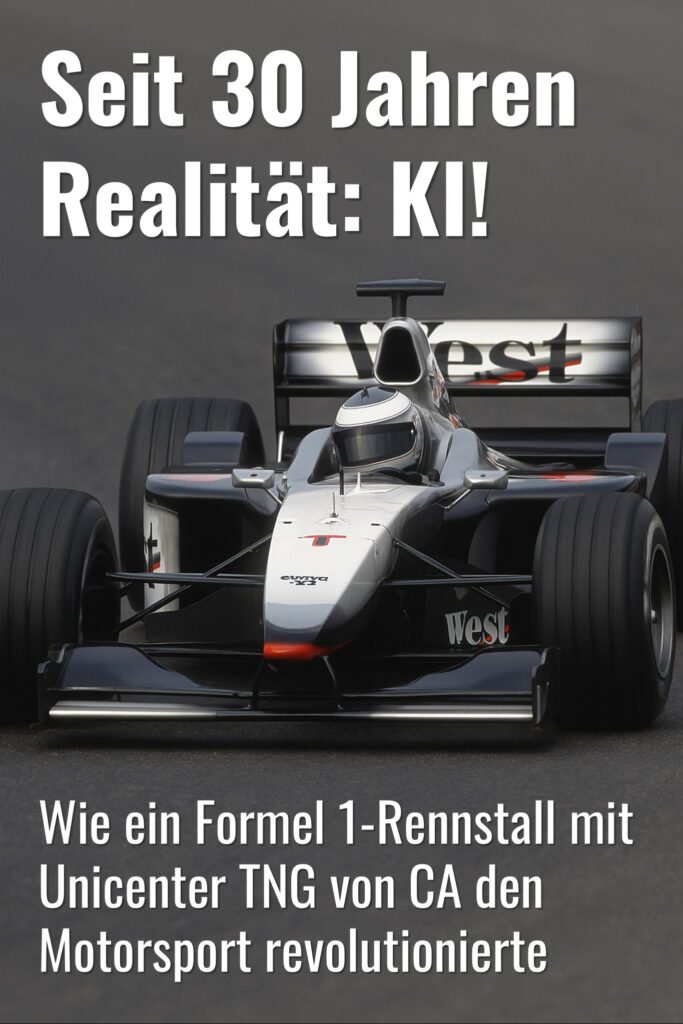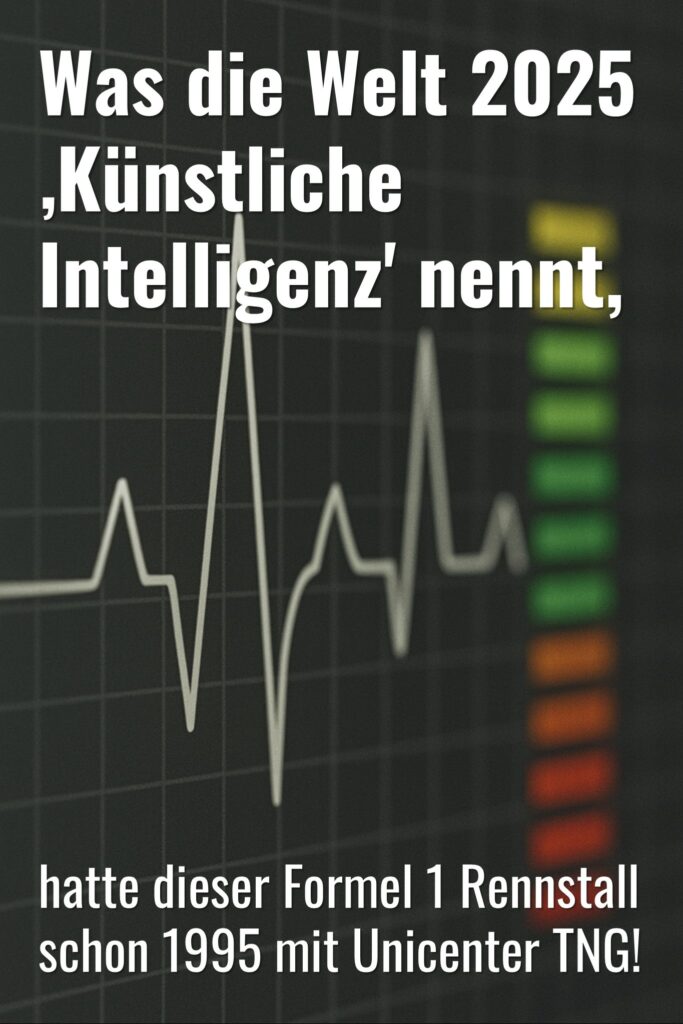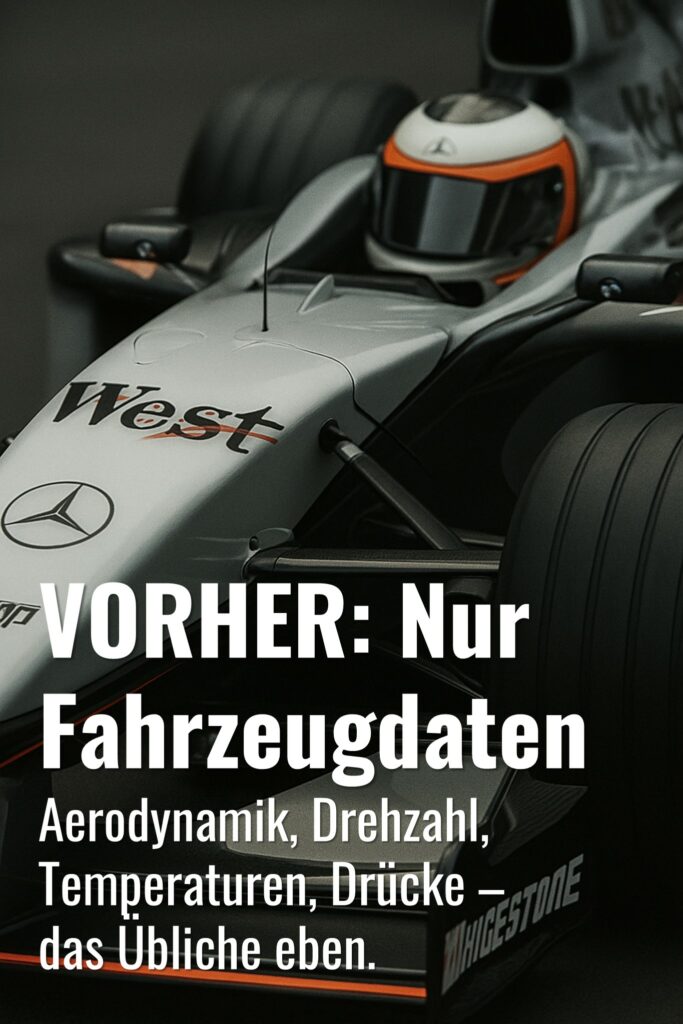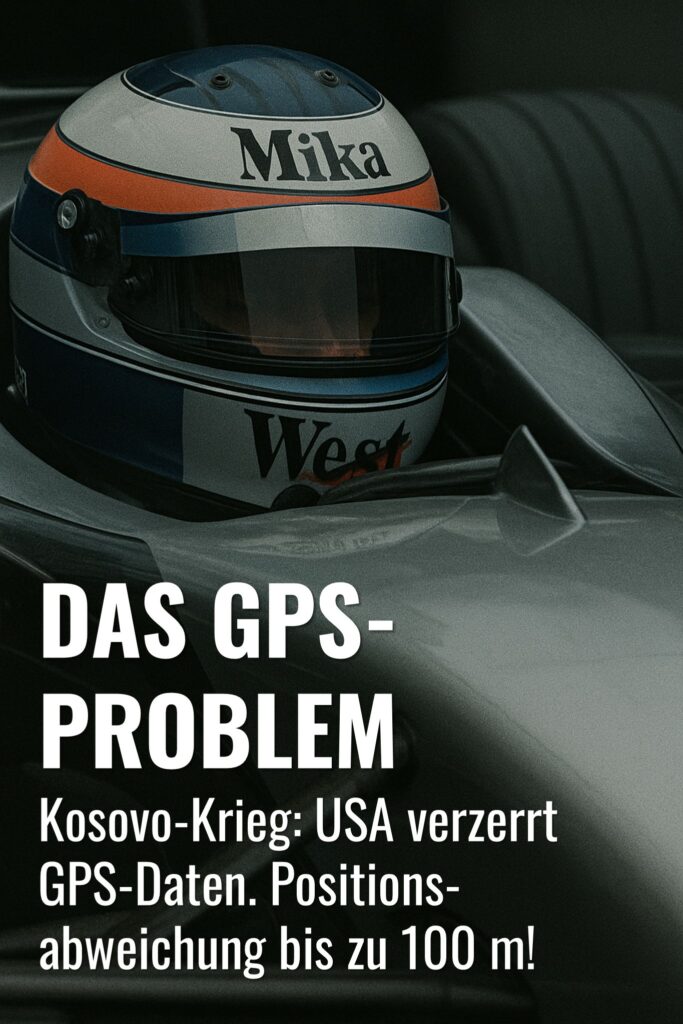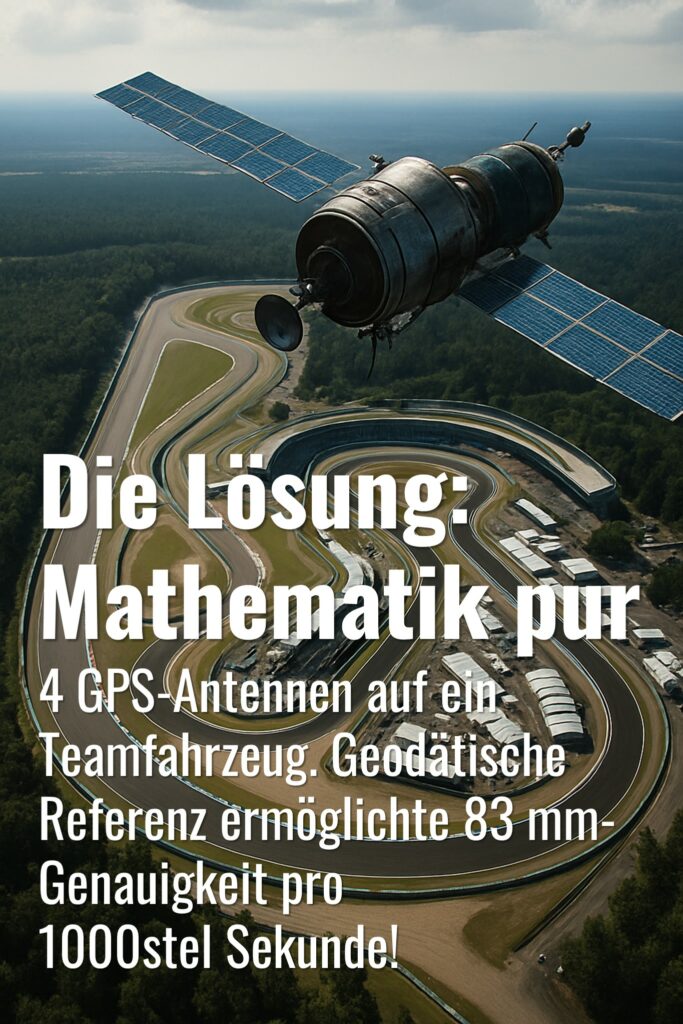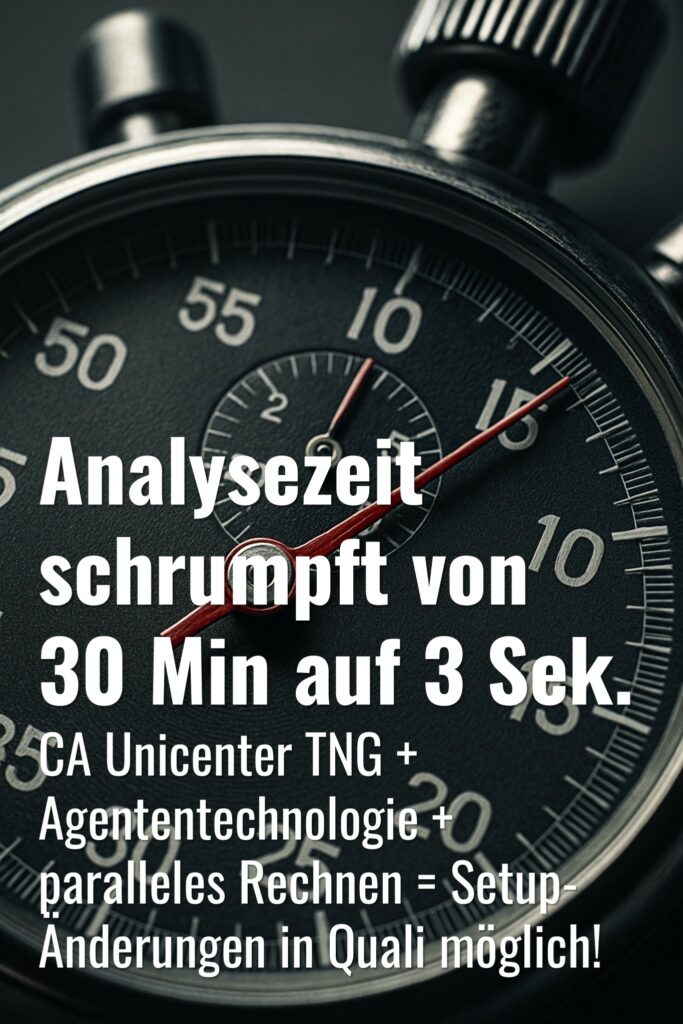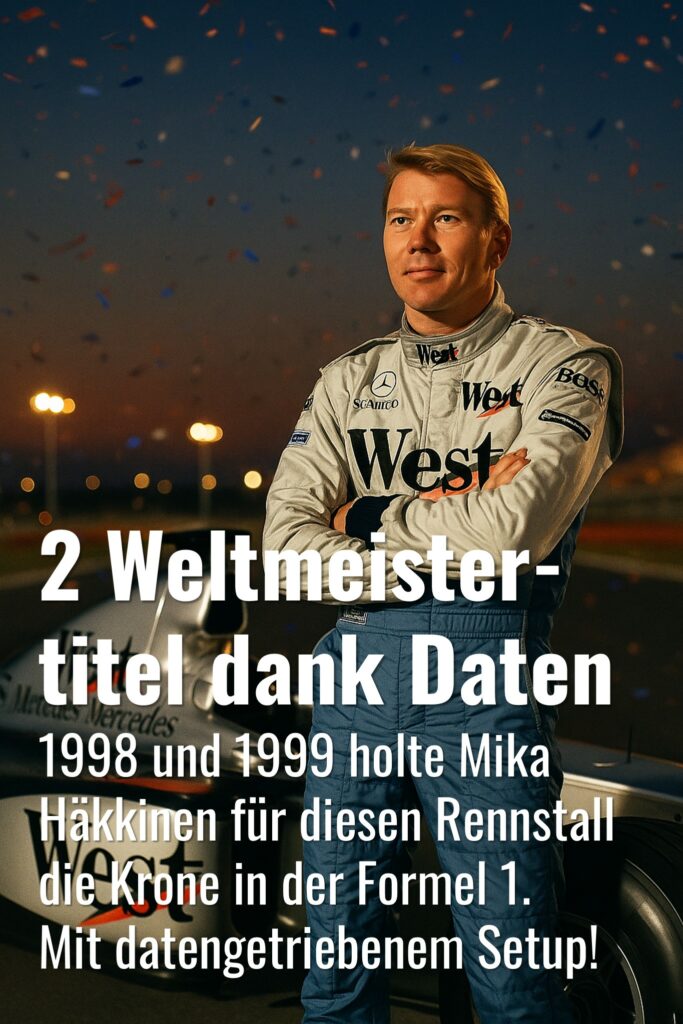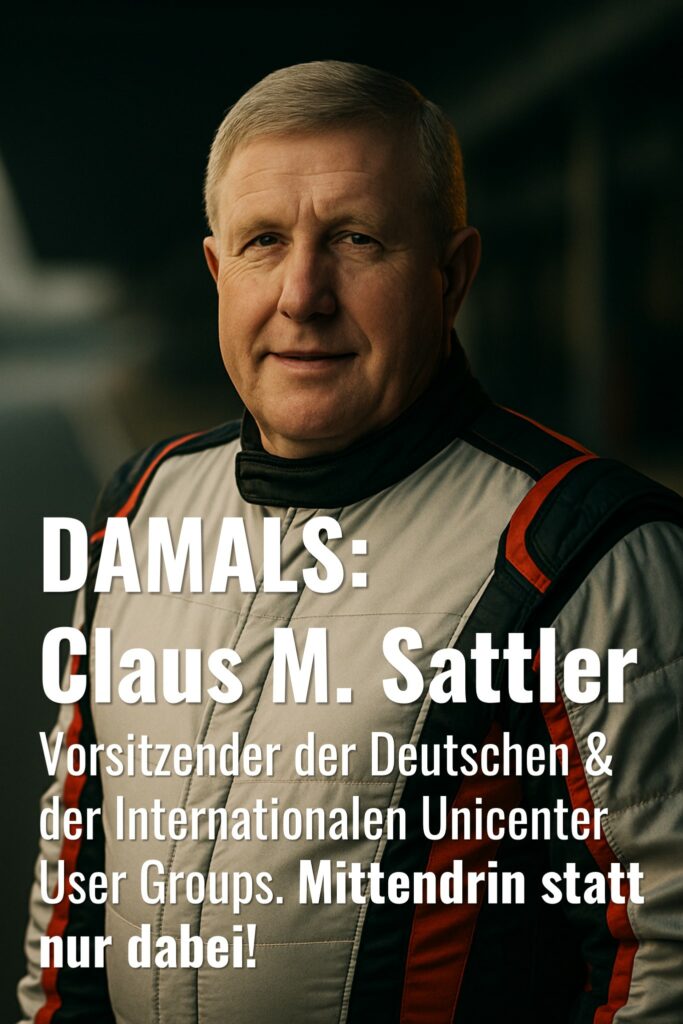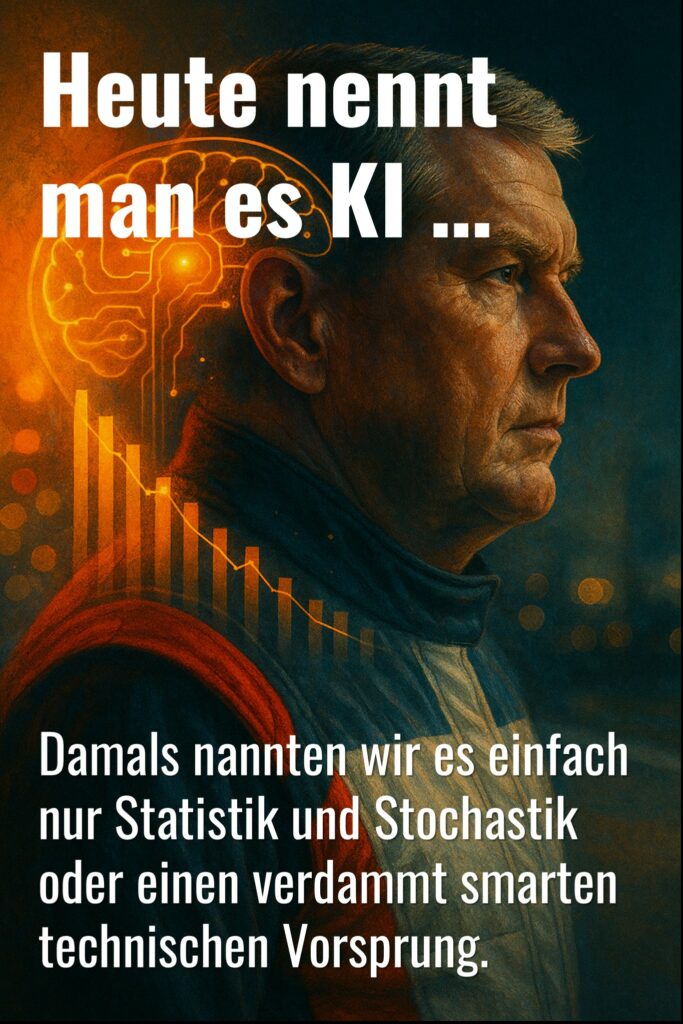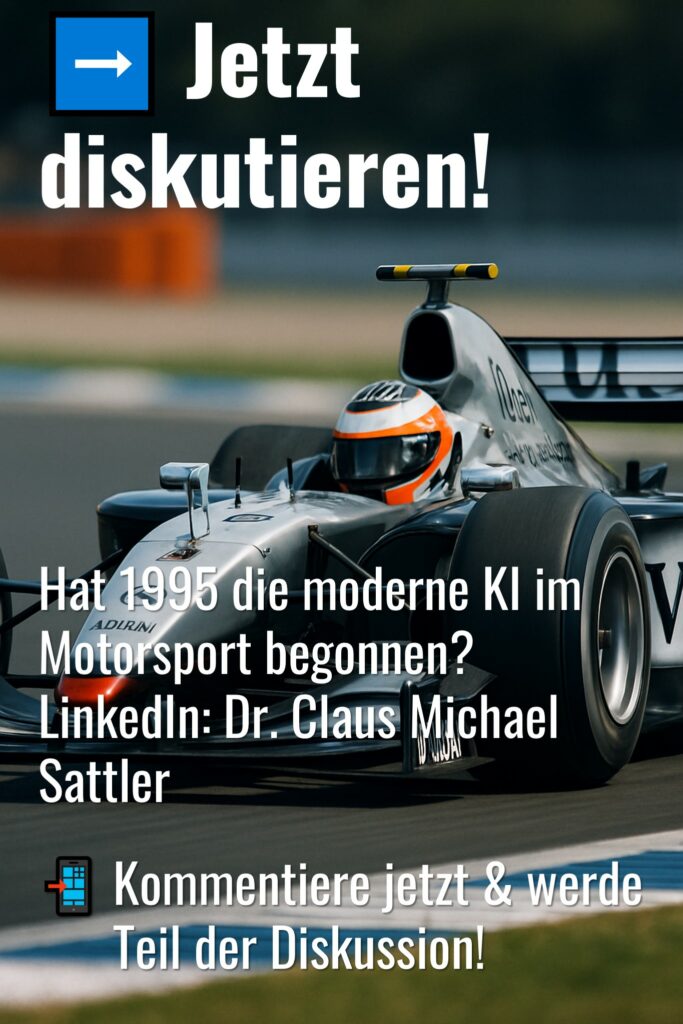
Interim CIO: Dr. Claus Michael Sattler
Amazing telemetry data analysis generates world champion
How Unicenter TNG from CA Technologies revolutionized Formula 1!
The digital transformation at West McLaren Mercedes
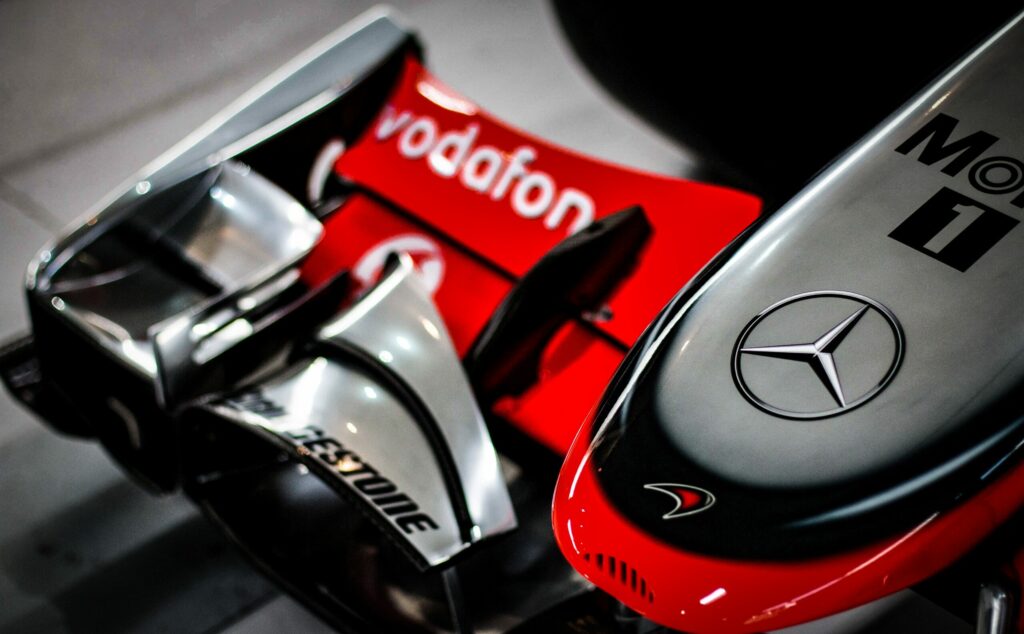
The task
- How can a Formula 1 racing team produce a world champion again?
The challenge
- How to analyze telemetry data with a network and system management tool?
The solution
- Use the four-tier architecture of Unicenter TNG:
- Agents
- Manager
- Repository
- World View
The result
- Mika Häkkinen became Formula 1 world champion in 1998 and 1999.
Introduction: Formula 1 - laboratory of innovation
Formula 1 is much more than just motorsport. It is a global showcase for innovation, engineering and technological breakthroughs. What is tested on the race track today often finds its way into the series production of cars or other industries tomorrow. But while the world’s eyes are mostly on the spectacular overtaking maneuvers, the thrilling duels and the glittering trophies, there is an equally exciting story going on in the background: The story of data, digitalization and intelligent analysis.
In the mid-1990s, Formula 1 was on the brink of a revolution that would change the sport and the technology behind it forever. At the heart of this revolution: the West McLaren Mercedes Team, CA Technologies with its Unicenter TNG software – and a handful of visionary minds, including Claus Michael Sattler. They all contributed to Formula 1 becoming a digital pioneer long before terms such as “artificial intelligence” (AI) and “big data” were on everyone’s lips.
The initial situation
Data analysis in motorsport - The state of the art before 1995
To understand the scope of the innovation at the time, it is worth taking a look at how the teams worked in the early 1990s. Although telemetry – the transmission of vehicle data to the pits – was already established, its analysis was still very limited. The engineers at McLaren and other teams concentrated on classic, technical parameters of the vehicle:
- Aerodynamics: wing positions, air resistance, downforce
- Speed: Absolute and relative values, sector times
- Motor speed: monitoring the load and efficiency
- Water pressure and water temperature: Important for water-cooled engines
- Oil level, oil pressure, oil temperature: the engine’s lifeline
- Interior temperature: influence on driver and electronics
- Electrics and electronics: fault diagnosis, system monitoring
- Tank level: Strategy planning
This so-called endogenous data – i.e. data that comes from the vehicle itself – was the basis for setup decisions, error analyses and strategic considerations. But they only told part of the story. The complex interaction between vehicle, driver, track and environment remained largely in the dark.
The limits of telemetry at the time
The evaluation of this data was laborious, time-consuming and often characterized by subjective assessments. Each practice or qualifying lap generated several megabytes of raw data, which had to be manually read out, processed and analyzed after each session. The engineers were under enormous time pressure: a qualifying session lasted 90 minutes, during which the drivers took to the track up to four times in order to achieve their best starting position. There was hardly any time for data-driven setup optimizations.
- In addition, external influences – such as weather, route conditions or the physical condition of the driver – were only recorded in a rudimentary way or not taken into account at all.
- As a result, many performance reserves remained unused, the causes of errors were not recognized and strategic decisions were often based on gut feeling instead of reliable data.
The partnership with CA Technologies
The beginning of a new era
In this situation, McLaren was looking for a partner that not only brought technological excellence, but also a spirit of innovation. The choice fell on CA Technologies (then still Computer Associates), one of the world’s leading providers of IT management software. With Unicenter TNG (The Next Generation), CA had developed a platform that was originally designed for the management of large IT infrastructures – but had the potential to solve the challenges of Formula 1 as well.
What was Unicenter TNG?
Unicenter TNG was a state-of-the-art, modular software solution capable of collecting, monitoring, analyzing and visualizing a wide variety of data sources. Originally intended for use in data centers, large and medium-sized companies, Unicenter TNG:
- Agent-based data collection: Software agents could be installed on any system and collect data in real time.
- Centralized control and administration: All data came together in a central management console.
- Automated analysis and alerting: anomalies, limit value violations and trends were automatically detected.
- Scalability and parallelization: Even large amounts of data could be processed quickly.
- Integration of a wide range of data sources: From servers and networks to industrial machines, such as escalators, elevators, air conditioning systems, people separation systems, fire alarm and fire extinguishing systems, power supplies, lathes and milling machines and much more.
For McLaren, Unicenter TNG was the perfect platform to ignite the next level of telemetry data analysis.
What new data has been collected?
The revolution: from endogenous to exogenous data
The introduction of Unicenter TNG at McLaren meant a radical expansion of the data universe. For the first time, it was possible to systematically record, analyze and correlate not only classic vehicle data, but also a wide range of external influences – so-called exogenous data.
Route and vehicle data
- Course of the race track: right or left-hand bends, inclines, declines, curve radii, sector layout
- Position on the course: Exact assignment of each measured value to a point on the course
- Tire parameters: Pressure, temperature, contact pressure, surface condition per tire
- Steering and shifting positions: Steering wheel angle, gear changes, accelerator pedal position
- Aerodynamic forces: pressure on the wings, lift under the wings, intake pressure on the underbody
Driver data
- Pulse rate: stress monitoring, stress level
- Body and head temperature: influence on concentration and performance
- Sweat loss and temperature: Indicator of dehydration and fatigue
- Breathing rate: load control
- G-forces: analysis of physical stress in bends, when braking and accelerating
Environmental data
- Air temperature, wind direction and speed: influence on engine performance and aerodynamics
- Surface temperature and humidity: grip level, tire wear
- Particle pollution: sand, dust, moisture, rain – all factors that influence driving behavior and vehicle response
- Asphalt grip: measurement of the coefficient of friction, important for setup and strategy
The challenge
The challenge: a flood of data and speed
Up to 200 million data points were recorded per race weekend with Unicenter TNG. However, the biggest challenge was not the sheer volume, but the speed: at 300 km/h, a Formula 1 car travels 83 mm per millisecond, per 1/1000 of a second. Each measured value had to be assigned to an exact point on the track in order to enable meaningful analysis. At 83 mm per millisecond, this is only possible through interpolation.
The problem of positioning
GPS and the political reality
Precise positioning was anything but trivial in the 1990s. Differential GPS promised an accuracy of a few centimeters, but political reality put paid to that. During the war in Kosovo, the USA temporarily reduced civilian GPS accuracy to as little as 100 meters in order to secure military advantages.
This meant that the measured position of the vehicle could deviate from the actual location by up to 100 meters – fatal for a data-driven analysis in which millimetres matter.
The ingenious solution
Four-antenna GPS and mathematical correction
The McLaren team developed a solution that was as simple as it was ingenious: four GPS antennas were mounted on the corners of the roof of a team car. As the distances between these antennas never changed, the team was able to mathematically compensate for the systematic deviation of the GPS position for the racing car.
Precise geodetic measurement and the calculation of correction factors made it possible to determine the position of the vehicle with an accuracy of up to 83 mm per millisecond – despite the artificial GPS distortion. A milestone for telemetry analysis!
The technical implementation
Unicenter TNG at the heart of data analysis
Agents, managers and the parallelization of evaluation
At the heart of the new data infrastructure was Unicenter TNG’s agent-based architecture. The data from every relevant sensor and every control unit in the car was collected in a read-only memory. This was read out in the box and software agents ran on the huge servers, which processed the data and transmitted it to the central management console. According to the regulations, data could only be sent for 60 measuring points
There, specialized manager modules took over the analysis, visualization and alerting. The great strength of Unicenter TNG was its ability to parallelize computing operations: Instead of evaluating the data of a lap one after the other (which took up to 30 minutes), several laps could now be analyzed simultaneously and laps from other races could be correlated. The evaluation time dropped to 3 seconds per lap in some cases – a quantum leap compared to up to 1800 seconds!
Visualization and decision support
The engineers in the box received the results in the form of clear dashboards, diagrams and heat maps. Deviations, limit violations or trends were automatically highlighted. This enabled data-driven management decisions to be made in real time – from adjusting the set-up and tire selection to the strategy for the next stint.
Admittedly, according to the regulations, this was only permitted in free practice and qualifying.
The role of Dr. Claus Michael Sattler
Bridge builder, visionary and contemporary witness
Dr. Claus Michael Sattler was a central figure during this period of upheaval. As founder and chairman of the board of the German-speaking Unicenter User Group and the International Unicenter User Groups Association, he represented the interests of over 30,000 companies in software development at CA Technologies. Sattler was not only the link between users and developers, but also the driving force behind the further development of Unicenter TNG as a platform for the integration of machine data – far beyond motorsport.
Sattler recognized the potential of digitalization for motorsport early on and promoted the exchange between teams, software developers and the scientific community. His expertise in the integration of OT systems (Operational Technology) and his commitment to the digitalization of processes made him a sought-after consultant, book author and university lecturer in the field of digital transformation, Industry 4.0 and data analytics.
Sattler's contribution to the digitalization of Formula 1
“Automated telemetry data analysis was the key to success! At that time, we still called AI statistics, stochastics, forecasting and interpretation. Back in the 1990s, Unicenter TNG enabled the McLaren team to analyze data at lightning speed and use the results.”
– Dr. Claus Michael Sattler, today
It was also Sattler who, as Chairman of the User Groups, incorporated the needs of users into the further development of Unicenter TNG and thus made a significant contribution to ensuring that the software met the high requirements of industry and SMEs, which ultimately also benefited Formula 1.
Knowledge transfer and sustainable impact
After his time with the user groups, Sattler continued his work as an interim manager, consultant, coach, keynote speaker and university lecturer.
He developed concepts such as “Simply think differently about data!” and drove forward the integration of Industry 4.0 solutions in companies. His books, which he co-authored, and his lectures are still standard works for digital transformation in industry and SMEs worldwide.
The fruits of partnership
Two world championship titles and a new era
The results of the technological revolution were not long in coming. With Mika Häkkinen, McLaren won both the drivers “and constructors” world championships in 1998 and 1999. The data-driven optimization of the vehicle set-up, strategy and processes gave the team a decisive advantage over the competition.
Data-driven decisions
Examples from practice
Setup optimization in real time
Thanks to the rapid evaluation of the telemetry data, the engineers were able to make targeted adjustments to the vehicle setup between stints. Changes to wing positions, suspension or tire pressure were no longer based on gut feeling, but on hard facts.
Tire strategy and pit stops
The integration of tire data, weather forecasts and track conditions made it possible to make more precise predictions about the optimum time to change tires. This reduced the risk of wrong decisions and saved McLaren valuable seconds in the race.
Driver coaching and load control
The analysis of the driver data helped to avoid overloads and optimize performance throughout the race. Mika Häkkinen benefited from targeted coaching and was able to play to his strengths.
More than motorsport
The impact on the industry
The technology developed and used at McLaren was far ahead of its time. The principles of automated data collection, transmission and analysis were later adopted in numerous industries – from manufacturing to healthcare.
Industry 4.0
From the race track to the factory
Many of the concepts known today as Industry 4.0 – such as the networking of machines, real-time analysis of production data and predictive maintenance – were anticipated in Formula 1. Sattler continued to drive these developments forward as a consultant and lecturer and, as an interim manager, helped and still helps companies to integrate the principles of data-driven decision-making into their processes.
Sustainability and efficiency
Even back then, data analysis was not only used to optimize performance, but also to increase sustainability. Unicenter TNG helped to use resources more efficiently, avoid waste and optimize processes – an aspect that is becoming increasingly important today under the buzzword “sustainable motorsport”.
The lessons from back then
What we can learn today from the digital pioneering era
The history of telemetry data analysis at West McLaren Mercedes is an impressive example of how the combination of engineering skills, IT excellence and visionary leadership can result in genuine innovation. Many of the solutions developed back then are now standard – not only in motorsport, but in the entire industry.
Artificial intelligence
Then and now
What was then called statistics, stochastics, forecasting and interpretation is now known as artificial intelligence. The ability to analyze large amounts of data in real time, recognize patterns and make predictions was already the key to success in the 1990s – even if the terms were different.
The importance of interdisciplinarity
The success of McLaren and CA Technologies was based on the close collaboration between engineers, computer scientists, mathematicians and users. Dr. Claus Michael Sattler embodied this interdisciplinarity like no other and shows that innovation can only be created in a team!
The courage to break new ground
The introduction of Unicenter TNG was a gamble – technologically, organizationally and financially. But the courage to break new ground and invest in digitalization paid off. Today, McLaren is considered a pioneer of data-driven transformation in motorsport.
Conclusion
A legacy that still has an impact today!
The introduction of Unicenter TNG at West McLaren Mercedes was a milestone in the history of motorsport and industrial digitalization. It showed how the combination of engineering, IT excellence and visionary leadership – embodied by personalities such as Ron Dennis and Charles B. Wang – can result in true innovation.
Claus Michael Sattler was not only there, but right in the middle of it.
The solutions of the time were what we now call artificial intelligence and data analytics. They were way ahead of their time and had a lasting impact not only on motorsport, but also on the entire industry and SMEs worldwide.
The discussion on LinkedIn
You can follow the discussion on LinkedIn at https://www.linkedin.com/posts/claus-michael-sattler_wir-hatten-ki-als-die-welt-noch-mit-fax-activity-7335542057559617536-GjQT.
